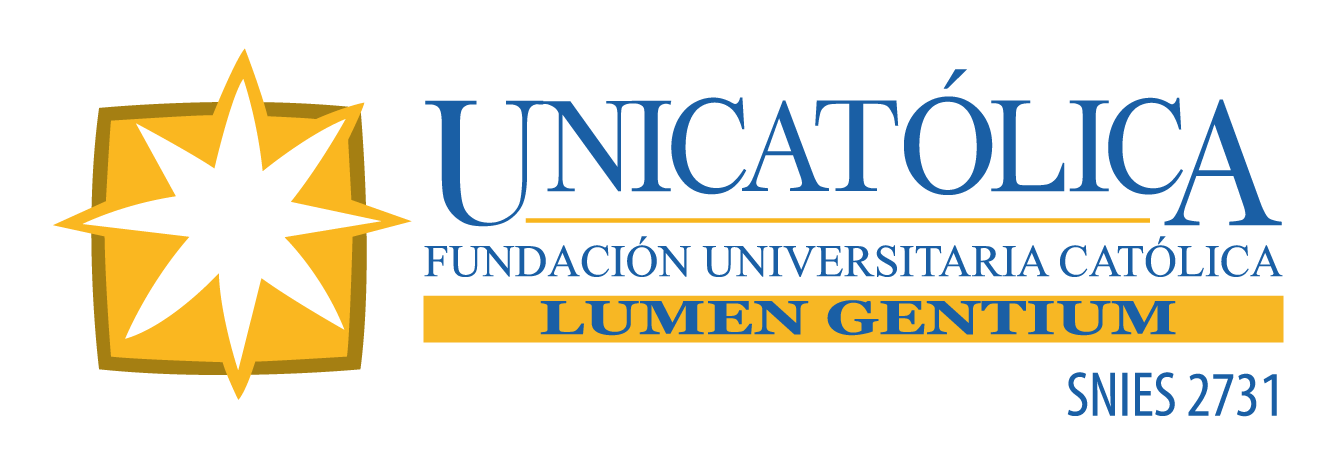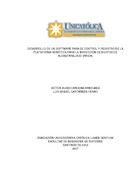Mostrar el registro sencillo del ítem
Desarrollo de un software para el control y registro de la plataforma robótica para la inspección de ductos de alcantarillado (Prida)
| dc.contributor.advisor | Ordoñez, John Edward | |
| dc.creator | Cardona Arboleda, Víctor Hugo | |
| dc.creator | Castañeda Henao, Luis Miguel | |
| dc.date.accessioned | 2018-06-07T22:42:41Z | |
| dc.date.available | 2018-06-07T22:42:41Z | |
| dc.date.created | 2017 | |
| dc.identifier.uri | http://hdl.handle.net/20.500.12237/985 | |
| dc.description | El siguiente trabajo presenta el desarrollo de un software para la integración de diferentes componentes de hardware en un solo sistema. La Plataforma Robótica Móvil de Inspección de Ductos (PRIDA), es un robot constituido por elementos de hardware libre los cuales están integrados en una armazón de desarrollo propio. El Software de Control y monitoreo de PRIDA - PRIDASoft se desarrolló usando el lenguaje de programación C++ por sus ventajas de comunicación con diferentes tipos de hardware. El entorno de desarrollo elegido es QT CREATOR, el cual permite trabajar en equipos que manejen sistemas operativos como Linux y Windows permitiendo generar versiones de la aplicación que puedan ser ejecutadas en diferentes plataformas. Debido a que el robot tiene elementos tales como: Arduino, Raspberry pi, motores, sensores y actuadores. Dicha integración se hizo por medio del software que tiene una interfaz que controla y monitorea el robot, el cual tiene como objetivo realizar inspecciones dentro de tuberías de alcantarillado superiores a 1m de diámetro. Además, cuenta con un sistema de indicadores, entre los que se encuentran: sistema de medición de distancia a obstáculos, sensores ambientales, medidor del nivel de batería y corriente, etc., cuyo fin es facilitar a los operarios de PRIDA, la detección de las condiciones ambientales que se inspeccionan de manera que se pueda hacer un diagnóstico de la tubería a la vez que podrían preverse posibles daños a la plataforma robótica. Otra de sus características es el registro de las variables sensadas y mensajes de operación, además permite monitorear el sitio explorado con una cámara ofreciendo posibilidades de captura de las imágenes transmitidas por esta desde la plataforma para detectar grietas y daños en las tuberías. Adicionalmente, el software cuenta con un control de acceso para proteger la integridad de los datos, en el cual solo los usuarios autorizados podrán utilizarlo con sus respetivos permisos sobre la plataforma. Así mismo dispondrá de una base de datos para el almacenamiento de la información y lograr tener un registro de las inspecciones realizadas en tiempo real, donde solo el administrador tendrá control de los mismos para evitar pérdidas y manipulación de los datos. Cabe mencionar que la base de datos se encuentra respaldada por un archivo log en donde se captura toda la información relacionada con la inspección y el estado de la plataforma con la finalidad de evitar la pérdida de datos en el eventual caso de que se produzca un error o una falla en el sistema. | spa |
| dc.description.abstract | The following work presents the development of a software for the integration of different hardware components in a single system. The Mobile Robot Platform of Inspection of Pipelines (PRIDA), is a robot consisting of free hardware elements which are integrated into a framework of own development. The PRIDA Control and Monitoring Software - PRIDASoft was developed using the C ++ programming language due to its advantages of communication with different types of hardware. The development environment chosen is QT CREATOR, which allows working in teams that manage operating systems such as Linux and Windows, allowing the generation of versions of the application that can be executed on different platforms. Because the robot has elements such as: Arduino, Raspberry Pi, motors, sensors and actuators. This integration was made through software that has an interface that controls and monitors the robot, which aims to perform inspections inside sewer pipes greater than 1m in diameter. In addition, it has a system of indicators, among which are: distance measurement system to obstacles, environmental sensors, battery level meter and current, etc., whose purpose is to facilitate the operators of PRIDA, the detection of the environmental conditions that are inspected so that a diagnosis of the pipeline can be made at the same time that possible damage to the robotic platform could be foreseen. Another of its characteristics is the recording of the sensed variables and operation messages, in addition it allows to monitor the explored site with a camera offering possibilities of capturing the images transmitted by it from the platform to detect cracks and damages in the pipes. Additionally, the software has an access control to protect the integrity of the data, in which only authorized users can use it with their respective permissions on the platform. It will also have a database for the storage of information and achieve a record of inspections carried out in real time, where only the administrator will have control of them to avoid losses and manipulation of data. It should be mentioned that the database is supported by a log file where all the information related to the inspection and the status of the platform is captured in order to avoid the loss of data in the event of an error or an error. it fails in the system. | spa |
| dc.format | spa | |
| dc.format.mimetype | application/pdf | |
| dc.subject | Plataforma robótica | spa |
| dc.subject | Desarrollo de software | spa |
| dc.title | Desarrollo de un software para el control y registro de la plataforma robótica para la inspección de ductos de alcantarillado (Prida) | spa |
| dc.subject.subjectenglish | Robotic platform | spa |
| dc.subject.subjectenglish | software development | spa |
| dc.rights.accessRights | info:eu-repo/semantics/openAccess | spa |
| dc.creator.degree | Ingeniero en Sistemas | spa |

